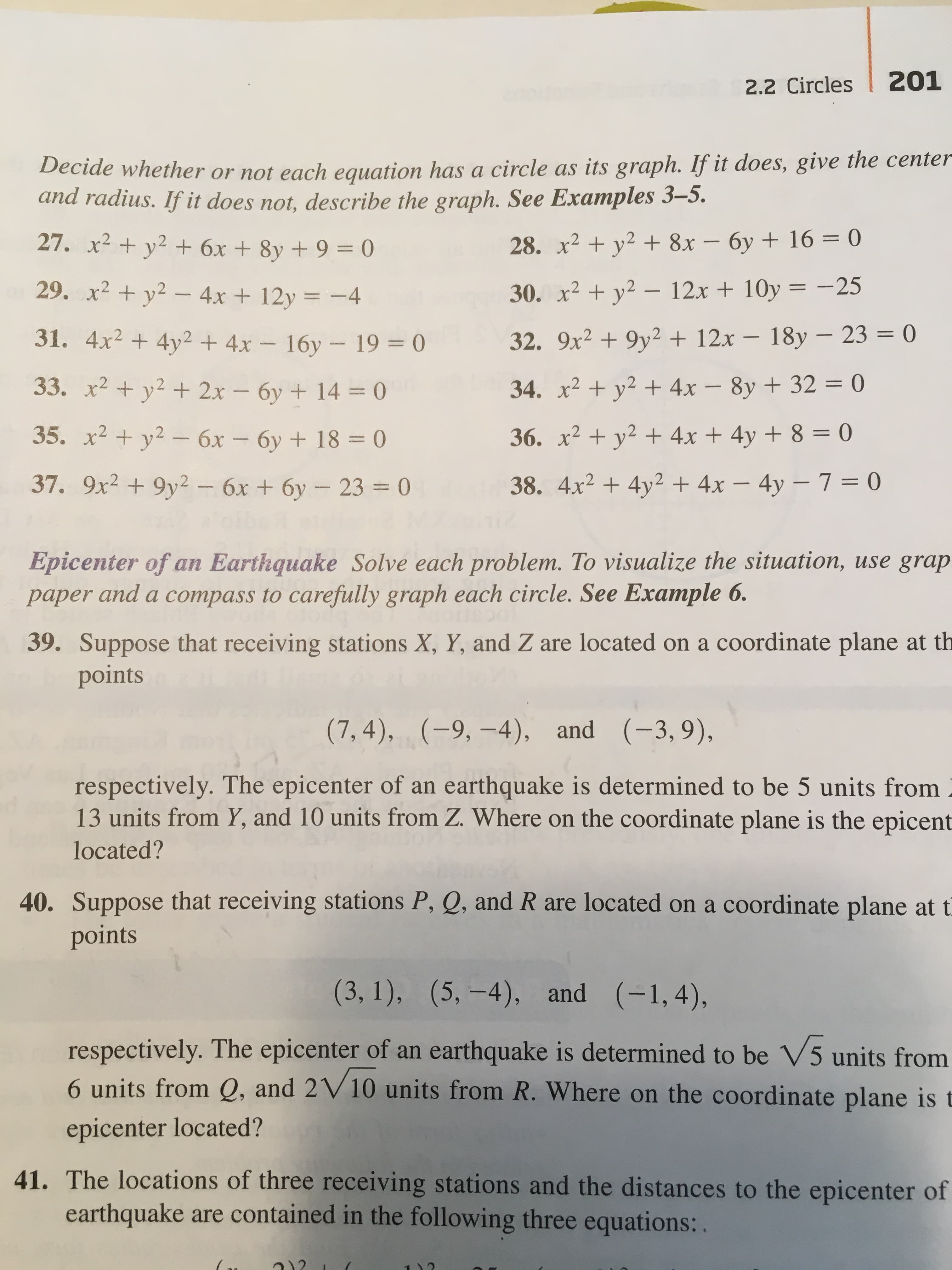2.2 Circles 201 Decide whether or not each equation has a circle as its graph. If it does, give the center and radius. If it does not, describe the graph. See Examples 3–5. 27. x² + y² + 6x + 8y + 9 = 0 28. x² + y2 + 8x - 6y + 16 = 0 29. x² + y2 – 4x + 12y = -4 30. x² + y² – 12x + 10y = -25 %D 31. 4x2 + 4y² + 4x - 16y - 19 = 0 32. 9x² + 9y² + 12x – 18y – 23 = 0 2 - %3D 33. x² + y? + 2x – 6y + 14 = 0 34. x² + y² + 4x – 8y + 32 = 0 %3D 35. x2 + y2 – 6x – 6y + 18 = 0 36. x² + y² + 4x + 4y + 8 = 0 37. 9x2 + 9y² – 6x + 6y – 23 = 0 38. 4x2 + 4y2 + 4x – 4y – 7 = 0 Epicenter of an Earthquake Solve each problem. To visualize the situation, use grap paper and a compass to carefully graph each circle. See Example 6. 39. Suppose that receiving stations X, Y, and Z are located on a coordinate plane at th points (7, 4), (-9, –4), and (-3,9), respectively. The epicenter of an earthquake is determined to be 5 units from 13 units from Y, and 10 units from Z. Where on the coordinate plane is the epicent located? 40. Suppose that receiving stations P, Q, and R are located on a coordinate plane at t points (3,1), (5, -4), and (-1,4), respectively. The epicenter of an earthquake is determined to be V5 units from 6 units from 0, and 2▼10 units from R. Where on the coordinate plane is t epicenter located? 41. The locations of three receiving stations and the distances to the epicenter of earthquake are contained in the following three equations: .
Unitary Method
The word “unitary” comes from the word “unit”, which means a single and complete entity. In this method, we find the value of a unit product from the given number of products, and then we solve for the other number of products.
Speed, Time, and Distance
Imagine you and 3 of your friends are planning to go to the playground at 6 in the evening. Your house is one mile away from the playground and one of your friends named Jim must start at 5 pm to reach the playground by walk. The other two friends are 3 miles away.
Profit and Loss
The amount earned or lost on the sale of one or more items is referred to as the profit or loss on that item.
Units and Measurements
Measurements and comparisons are the foundation of science and engineering. We, therefore, need rules that tell us how things are measured and compared. For these measurements and comparisons, we perform certain experiments, and we will need the experiments to set up the devices.
How would I solve problem 31? Would I divide by 4 to get x squared alone?

Trending now
This is a popular solution!
Step by step
Solved in 3 steps with 4 images









